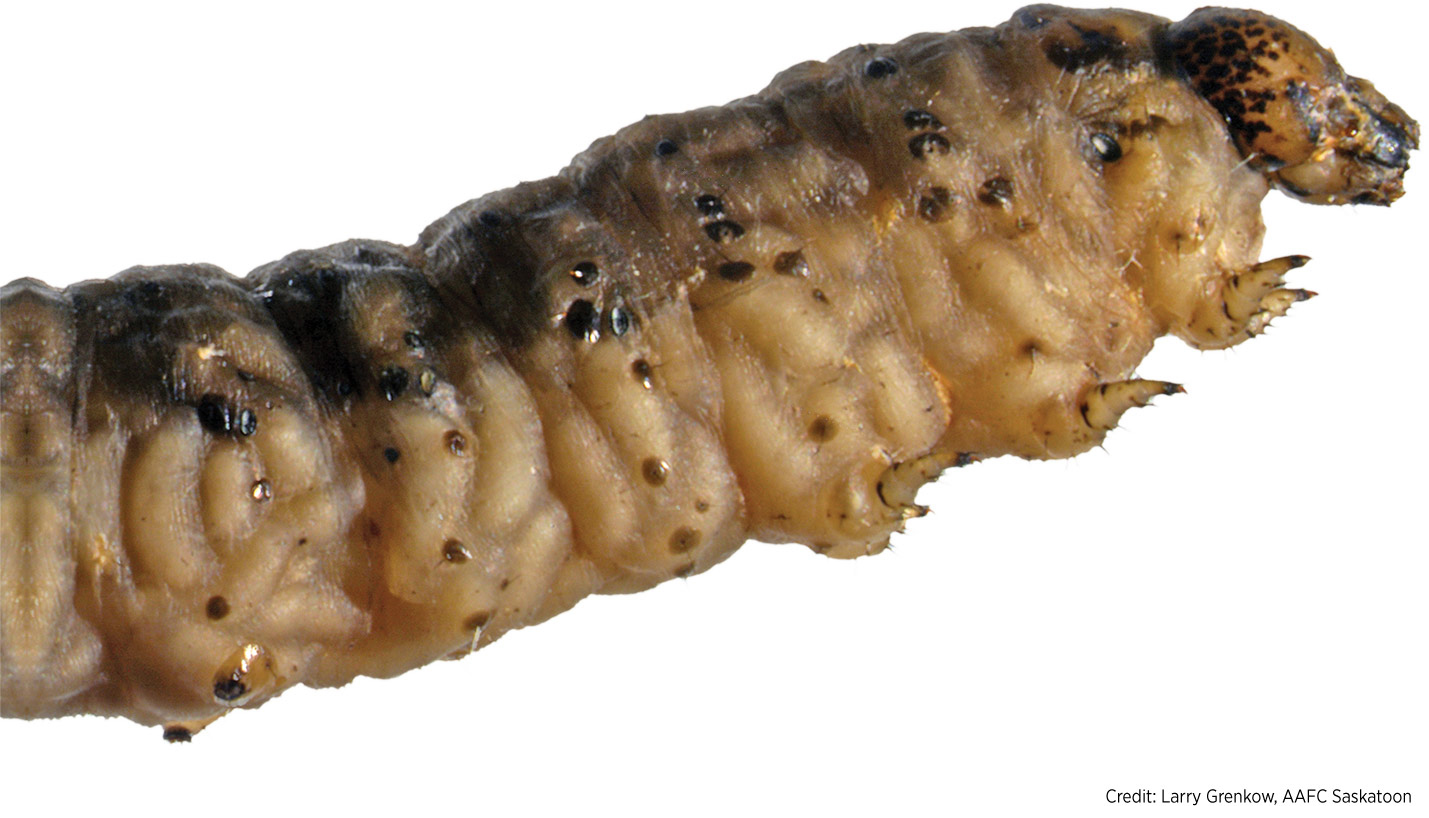Biocontrol of canola cutworms
Key practice: The key to minimizing damage from cutworms is early detection through frequent field scouting. Proper identification of cutworm species can be important in the protection of beneficial insects and implementation of other biocontrols.
Project title, Lead researcher: “Biocontrol of canola cutworms: Identification and attraction of parasitoids,” 2012-15, Barbara Sharanowski, University of Manitoba
Grower organization funder: ACPC
Insecticide application is the most common control option for cutworms in canola but it is very difficult to manage. Effective timing of these treatments varies between cutworm species based on life cycle and their subterranean and nocturnal habits. This study looked at para-
sitoids as the most effective biocontrol option for cutworms affecting canola.
The objectives of this three-year study were: to develop an understanding of the species involved; learn which species of cutworm each parasitoid would attack; and determine whether these parasitoids effectively reduce cutworm damage.
Cutworm samples were collected from Manitoba farm fields from May to July in 2012, 2013 and 2014. Research collaborators in Alberta provided additional reared parasitoids and their host cutworms. Results showed a reduction in parasitized cutworms in Manitoba for 2013 and 2014 compared to 2012. Numbers in Alberta were lower in 2012 and 2014 compared to 2013.
A total of 16 different species of hymenopteran parasitoids were found attacking Prairie cutworms, several of which were new host identifications.
A user-friendly online identification key to all 16 species, complete with high-resolution images, will be published by the end of 2015.
Dual-choice tests were conducted to determine the effectiveness of various cover crops to attract beneficial parasitoids based on the flower colour and flower odour preferences of both fed and starved parasitic wasps. In these tests, yellow flowers proved much more attractive than white or green and starved wasps clearly favoured floral odours from canola and mustard over camelina and buckwheat.
The tested cover crops also added the nutritional resources necessary to maximize the parasitoid’s ability to lay eggs. However, all the benefits provided by these cover crops may still not be enough to reduce cutworm populations below economic levels due to relatively low rates of parasitism. Despite aiding in the control of cutworm numbers, parasitized cutworms also tend to feed more frequently and for longer periods, which can increase damage.
These lower rates of parasitism may be partly due to a lack of crop diversity, reduced rotations and the elimination of hedgerows and natural edges to maximize cropping space. This creates an overall agricultural landscape that may not provide parasitoids with adequate nutritional resources.
According to the data from this study, entomopathogenic fungi (EPF) caused greater cutworm mortality rates than any of the collected parasitoids and may be a more suitable biocontrol agent. Few studies have reviewed the potential of this environ-mentally friendly option.
The best time for EPF application is at the early seedling stage, as cutworm damage also occurs early. Since this is the same timing as herbicide application, studies must be conducted on their interactions. Sharanowski will lead further testing on EPF as a biocontrol of cutworms in 2015-16.
Conclusions
The key to minimizing cutworm damage is early detection. Scout the fields and inspect seedlings every three to four days during the first few weeks of crop development, looking for bare areas, holes or notches in foliage, and plants that are wilting, toppling over or completely cut off.
Knowing the species of cutworm can be important because some species complete the larval stages earlier in the year than others, and some species are more likely to feed on and clip stems than others.
A nominal economic threshold for insecticide application may be reached at 25 to 30 percent stand reduction.

Percentage of dead cutworms due to different mortality factors by year. All other cutworms collected for the study lived to form adult moths.
Determine if the population is patchy or evenly distributed through-out the field. High populations are often localized, leading to expanding bare patches in fields as they consume all the canola plants in an area and move outward in search of more food. Spot spraying the affected patches and a pass or two in the surrounding crop can often be effective in limiting outbreaks.
After the second or third year of infestation, beneficial organism populations such as parasitic insects, viral diseases and bacterial infections usually build up enough to begin bringing cutworm numbers down.





